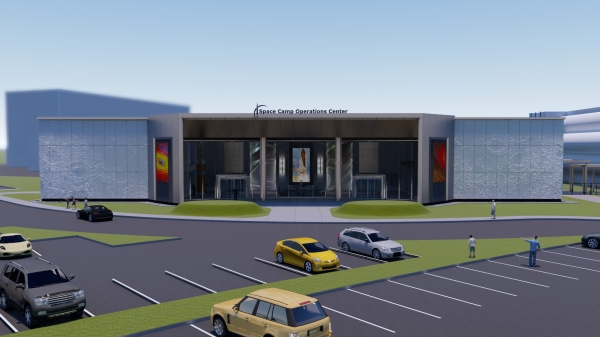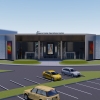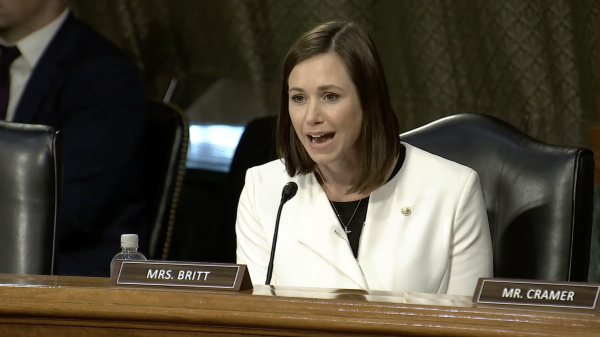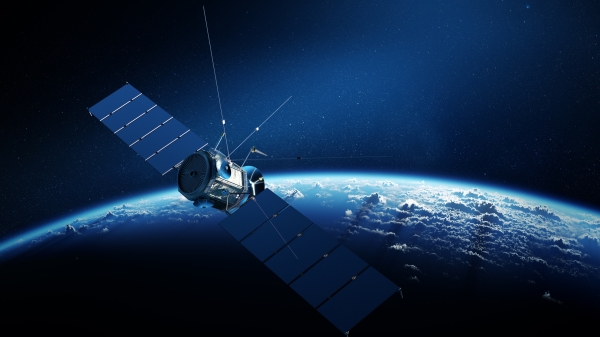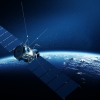By Brandon Moseley
Alabama Political Reporter
On Friday, October 23, NASA announced that it’s long awaited human-rated rocket, the Space Launch System (SLS) has completed all steps needed to clear a critical design review (CDR). The SLS is the first vehicle designed to meet the challenges of the journey to Mars and the first exploration class rocket since the Saturn V. SLS will be the most powerful rocket that has ever been built. It will be the launch vehicle for NASA’s Orion spacecraft to explore beyond Earth Orbit.
The CDR provides a final look at the design and development of the integrated launch vehicle before full-scale fabrication begins.
The deputy associate administrator of NASA’s Exploration Systems Development Division Bill Hill said, “We’ve nailed down the design of SLS, we’ve successfully completed the first round of testing of the rocket’s engines and boosters, and all the major components for the first flight are now in production. There have been challenges, and there will be more ahead, but this review gives us confidence that we are on the right track for the first flight of SLS and using it to extend permanent human presence into deep space.”
SLS Program manager John Honeycutt said, “This is a major step in the design and readiness of SLS. Our team has worked extremely hard, and we are moving forward with building this rocket. We are qualifying hardware, building structural test articles, and making real progress.”
The CDR examined the first of three planned configurations the rocket: SLS Block 1. The SLS Block I configuration will have a minimum 77 ton lift capability. It is powered by twin boosters and four RS-25 engines. The second configuration, SLS Block 1B, would use a more powerful exploration upper stage to raise the lift capacity to 115 tons. Block 2 will have an additional pair of advanced solid or liquid propellant boosters and 143 tons of lift capacity. The SLS will use the same four RS-25 engines In each configuration. The RS-25 engine, is a former space shuttle main engine operating at higher thrust levels in order to provide the power needed for the SLS vehicle. Testing on the engines was completed at Stennis over the summer.
Over 11 weeks, 13 teams of senior engineers and aerospace experts across both NASA and the rocket industry reviewed more than 1,000 SLS documents and more than 150 GB of data as part of the comprehensive assessment process at NASA’s Marshall Space Flight Center in Huntsville, where the SLS project is managed for NASA.
According to NASA, The Standing Review Board reviewed and assessed the program’s readiness and confirmed the technical effort is on track to complete system development and meet performance requirements on budget and on schedule.
The results of the review were presented to NASA’s Program Management Council, led by NASA Associate Administrator Robert Lightfoot in October.
NASA’s Marshall Space Flight Center in Huntsville manages the SLS Program for NASA. The RS-25 engine, is a former space shuttle main engine operating at higher thrust levels in order to provide the power needed for the SLS vehicle. Data from the test will aid in development of a new engine controller, or “brain,” to monitor engine status and communicate programmed performance needs.
NASA Administrator Charles Bolden said last year, “We are on a journey of scientific and human exploration that leads to Mars, and we’re firmly committed to building the launch vehicle and other supporting systems that will take us on that journey.”
US Senator Jeff Sessions (R-Alabama) has said that it is ,”The Space Launch System program that is going to lead us into exploration of the solar system.”
Rep. Brooks said, “The heavy-lift capability that we will potentially have once this is up and rolling is just a tremendous advantage for our country vis-à-vis all of our international competitors. And remarkably, for any kind of federal government program, SLS is five months ahead of schedule, on budget, and recently passed the Critical Design Review—all unprecedented feats for a program of this size, so thank you for what you are doing.”














































